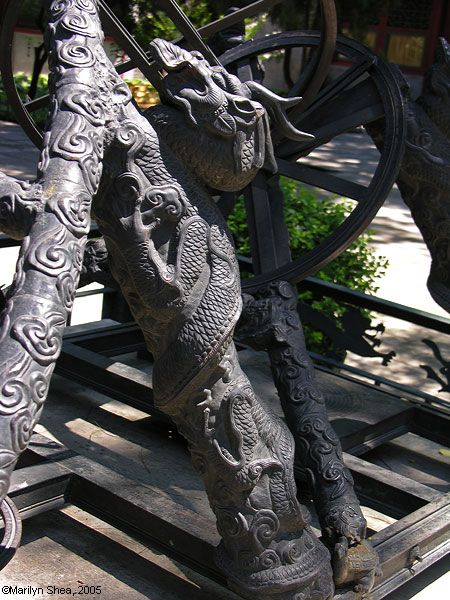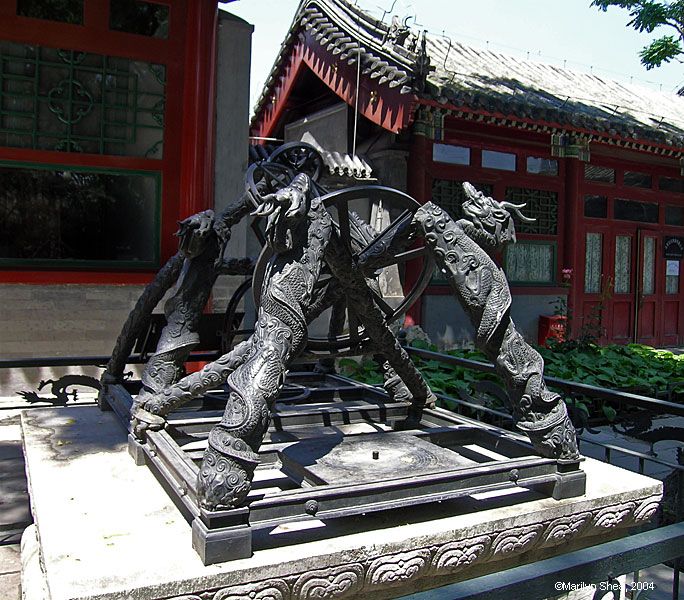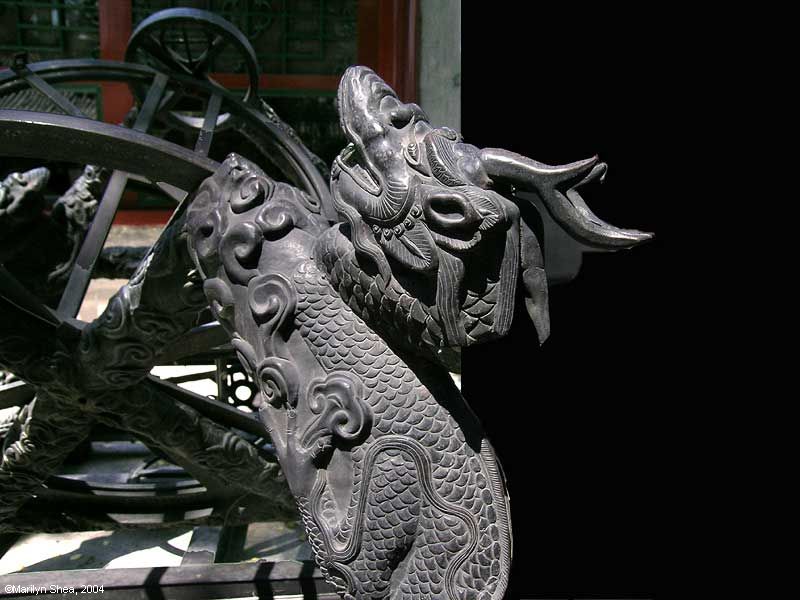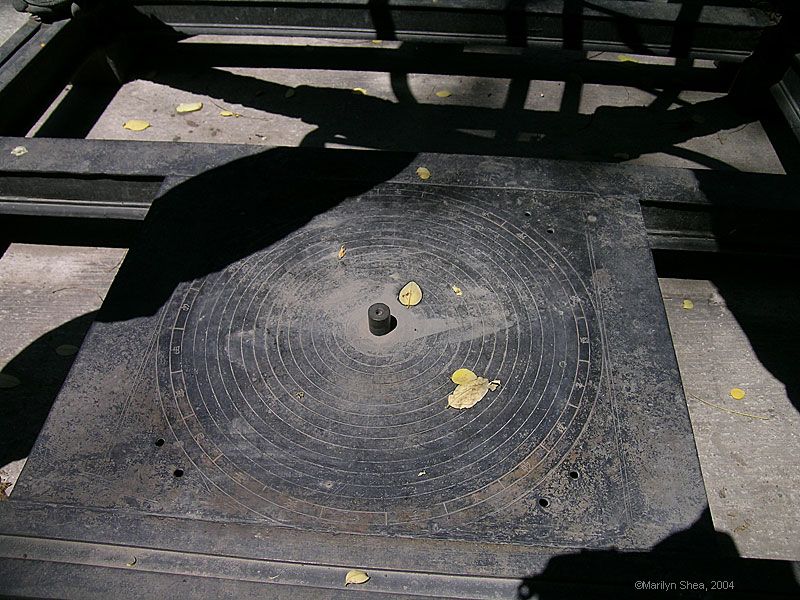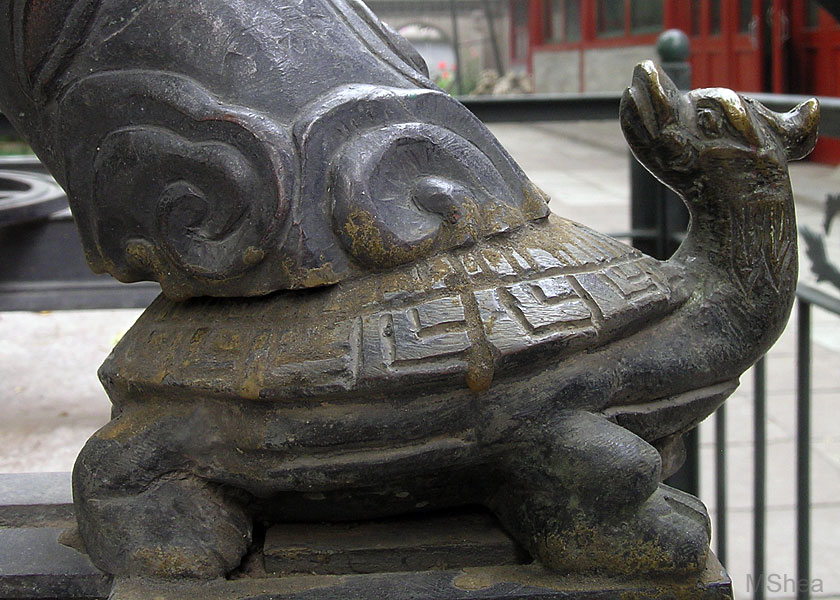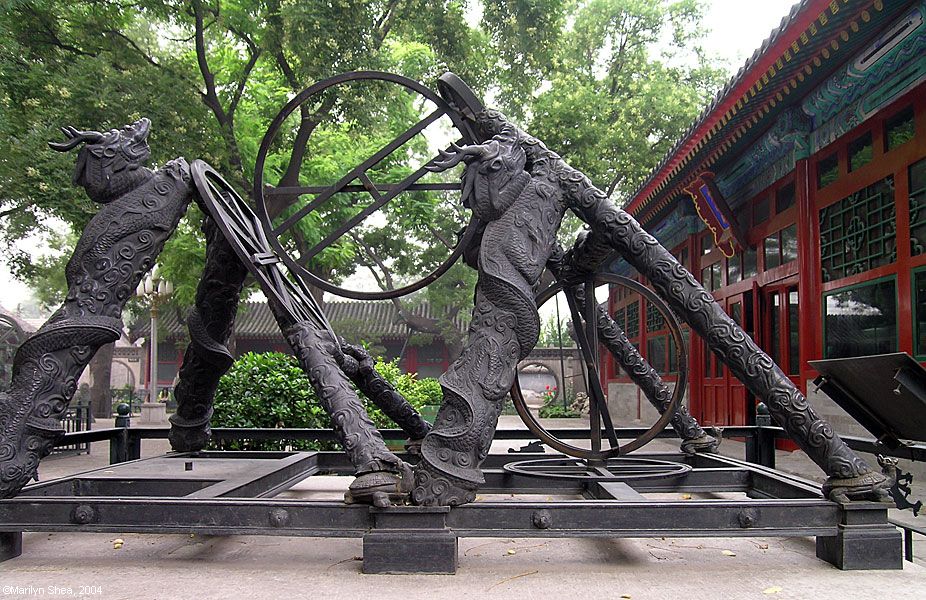 The abridged or simplified armilla ( 简仪 jiǎnyí ) was invented by Guo Shoujing in 1276 AD. It is called "simplified" because it is simpler to use than the traditional armillary sphere, and it is called "abridged" because it gives a good view of the celestial sphere except around the area of Polaris. In Western astronomy it is most often called an abridged armilla, while the Chinese name translates as simplified. The abridged or simplified armilla ( 简仪 jiǎnyí ) was invented by Guo Shoujing in 1276 AD. It is called "simplified" because it is simpler to use than the traditional armillary sphere, and it is called "abridged" because it gives a good view of the celestial sphere except around the area of Polaris. In Western astronomy it is most often called an abridged armilla, while the Chinese name translates as simplified.
The abridged armilla has two rings at right angles to one another. The single ring is aligned with the equator and is called the equatorial ring. Guo Shoujing is responsible for adding the equatorial ring. The double ring is perpendicular to the equatorial ring. Between its two rings it has the sight, a single tube that can be aimed at an individual star. Cross-hairs help make exact positioning. The ring rotates and then points to gauges on the equatorial ring and on the double ring that tell you the position of whatever is in the sight.
One of the innovations was to install four small cylinders between the main measurement ring and the equatorial plane to reduce friction and make measurement more accurate. These cylinders are analogous to our modern ball bearings. The simplified armilla takes measurements of the position of the sun like the gnomon but it can also measure the angle of the sun at any time.
This particular instrument has combined a number of instruments such as azimuth and horizon circles as well as a sundial. It can be used to measure topography and in engineering and even in practical astronomy. It is even an astronomical compass. If you point the instrument at a known planet or star it can tell you the location of north.
There is a small circle at the base with a groove within its diameter. This groove and the groove in the square base can be filled with water to establish plumb. It is important that both the supporting structure and the instrument itself be checked to make sure the instrument remains true after a move or over time.
This abridged armilla at Beijing Ancient Observatory (古观象台) is 1/3 life size and is a copy of one made in 1439. The original was once housed in Beijing but was moved to the Purple Mountain Observatory in 1933 as the Japanese were advancing.
|

 The abridged or simplified armilla ( 简仪 jiǎnyí ) was invented by Guo Shoujing in 1276 AD. It is called "simplified" because it is simpler to use than the traditional armillary sphere, and it is called "abridged" because it gives a good view of the celestial sphere except around the area of Polaris. In Western astronomy it is most often called an abridged armilla, while the Chinese name translates as simplified.
The abridged or simplified armilla ( 简仪 jiǎnyí ) was invented by Guo Shoujing in 1276 AD. It is called "simplified" because it is simpler to use than the traditional armillary sphere, and it is called "abridged" because it gives a good view of the celestial sphere except around the area of Polaris. In Western astronomy it is most often called an abridged armilla, while the Chinese name translates as simplified.

